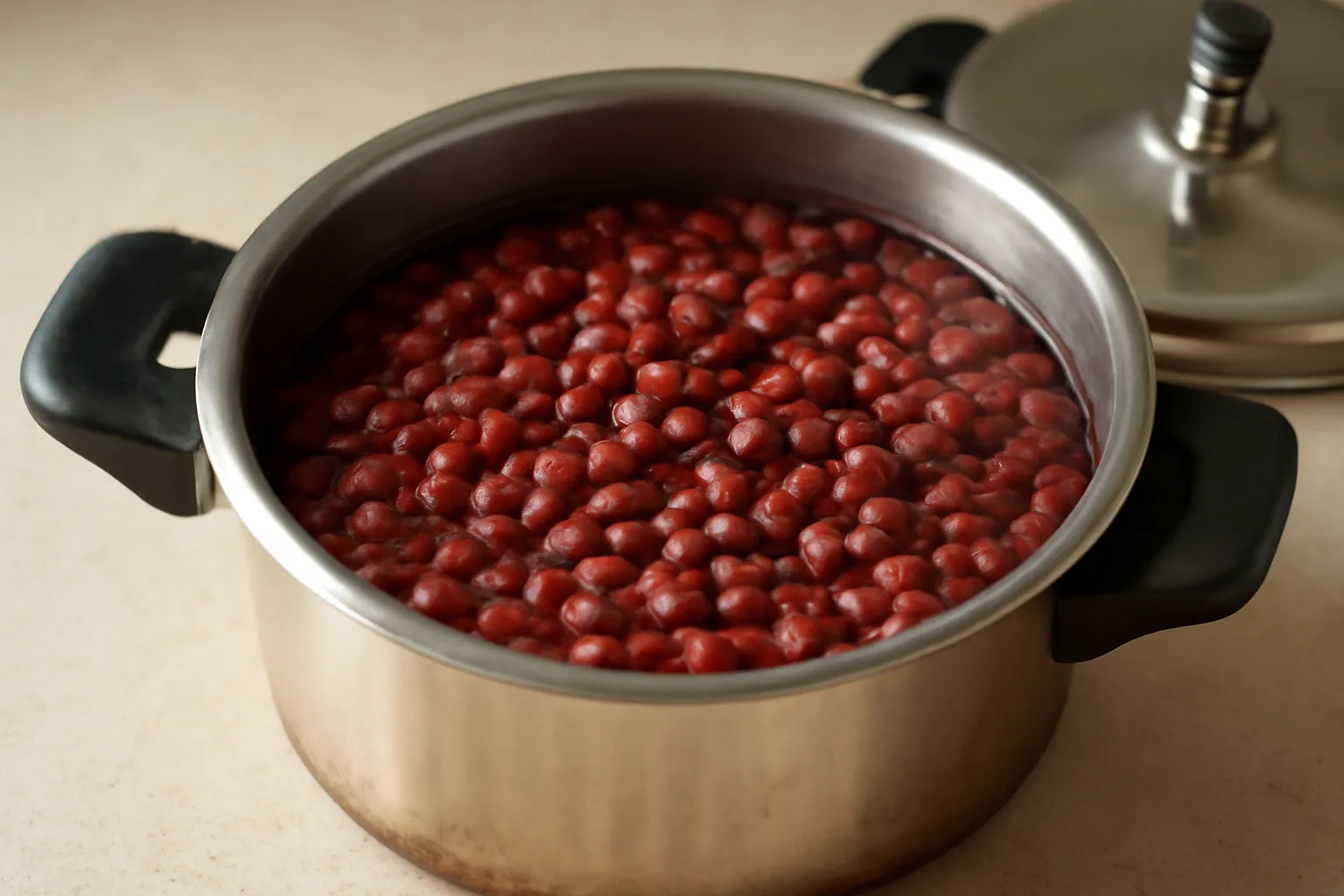Are you wondering how to boil red beans to perfection? Whether you’re using a pressure cooker or boiling them traditionally, discover the best methods to achieve soft, flavorful red beans in this detailed guide.
Boiling red beans is a simple yet essential skill for many dishes. From soups to stews and even desserts, red beans play a key role in global cuisine. In this article, we’ll explore the best ways to boil red beans, focusing on methods like using a pressure cooker, and provide tips to make the process as efficient and effective as possible.
Boil Red Beans with a Pressure Cooker
When time is of the essence, a pressure cooker can be your best friend for boiling red beans. The intense heat and sealed environment speed up the cooking process, ensuring your beans are tender in a fraction of the time it would take using traditional boiling methods.
Why Use a Pressure Cooker?
A pressure cooker uses steam and pressure to cook food faster. When boiling red beans, this method allows for softer beans in a shorter amount of time. It’s especially useful for tougher beans that typically require long cooking periods.
Key Benefits:
-
Faster Cooking: A pressure cooker can reduce the cooking time of red beans from hours to under 30 minutes.
-
Better Retention of Nutrients: Due to the sealed cooking environment, pressure cooking helps retain more nutrients compared to boiling beans on an open stove.
-
No Need for Pre-soaking: While soaking beans overnight can help with the cooking process, a pressure cooker reduces or eliminates the need for soaking.
Steps to Boil Red Beans in a Pressure Cooker
-
Prepare Your Beans Start by rinsing your red beans under cold water. This helps remove any dirt or debris.
-
Add Beans and Water Place your rinsed beans into the pressure cooker. Add water—generally, a ratio of 1:3 of beans to water is ideal.
-
Seasoning You can add seasonings like a pinch of salt, bay leaves, or a piece of kombu (seaweed) for flavor.
-
Cooking Time Seal the pressure cooker and bring it up to high pressure. Once pressure is reached, cook for about 25-30 minutes.
-
Release Pressure and Check After cooking, allow the pressure to naturally release before opening the cooker. Check if the beans are tender. If not, cook for a few more minutes under pressure.
Pro Tip If you’re cooking beans for a recipe where texture is important, avoid overcooking, as beans can turn mushy quickly in a pressure cooker.
Learn More About Pressure Cookers
Boil Red Beans in a Pressure Cooker
Although pressure cookers are efficient, they do require careful handling. The most important aspect of boiling red beans in one is ensuring that your pressure cooker is up to the task and that the beans don’t end up too overcooked or undercooked.
Pressure Cooking Advantages and Drawbacks
Using a pressure cooker offers significant speed benefits, but it requires attention to detail to prevent common mistakes.
Advantages:
-
Convenience: You can set it and forget it, freeing you up for other tasks.
-
Less Energy Consumed: Pressure cooking uses less energy, as it cooks food more quickly.
-
No Need for Constant Monitoring: Unlike traditional boiling, you don’t need to stand by the stove and stir or check for water levels.
Potential Drawbacks:
-
Overcooking Risk: If you’re not careful, beans can become mushy, especially if you forget to release the pressure or cook them for too long.
-
Initial Setup: It takes a little bit of time to get familiar with using a pressure cooker, including getting comfortable with safety features and cooking times.
Best Practices for Perfect Red Beans
-
Use Fresh Beans If possible, always use fresh red beans. Older beans take longer to cook and may not soften properly.
-
Adjust for Altitude If you’re cooking at a high altitude, increase the cooking time slightly. Beans may take longer to cook due to lower atmospheric pressure.
-
Avoid Overcrowding If you’re cooking a large batch of beans, make sure there’s enough room in the cooker for the beans to expand and cook evenly.
Discover More About Cooking Red Beans
How to Boil Red Beans: The Traditional Method
While the pressure cooker is a game-changer, some people prefer the slow, traditional method of boiling red beans on the stove. This method is easy and inexpensive, and the results can be just as satisfying when done correctly.
Traditional Boiling Method
If you don’t have a pressure cooker or simply prefer the classic approach, boiling beans on the stove is a tried-and-true method. Here’s how to get started:
Step-by-Step Guide:
-
Rinse the Beans Wash your red beans thoroughly to remove dirt and debris.
-
Soak or Skip While soaking overnight can reduce cooking time, it’s not strictly necessary. If you skip the soak, you may need to cook the beans longer.
-
Bring to Boil Add your beans and enough water to cover them by a few inches. Bring the water to a boil.
-
Simmer Reduce the heat to a simmer and cover. Stir occasionally to prevent sticking, and ensure that the beans remain submerged in the water.
-
Cook for 1-2 Hours Depending on the type of beans and how well they were soaked, it can take anywhere from 1 to 2 hours for the beans to soften completely.
Pro Tips for Boiling Red Beans:
-
Check the Water Level Be sure to keep an eye on the water level while boiling, adding more if necessary.
-
Avoid Stirring Too Much Constant stirring can break the beans apart. Stir gently when needed.
-
Test for Doneness Taste a few beans to ensure they are soft but not falling apart.
Get More Tips on Traditional Bean Boiling
Boiling red beans is a straightforward process, but the method you choose can make all the difference. Whether you use a pressure cooker for speed and convenience or prefer the classic stovetop method, knowing how to cook red beans properly ensures that you always get the perfect texture and flavor for your recipes.
In conclusion, understanding the art of boiling red beans—whether using a pressure cooker or the traditional method—can significantly elevate your cooking. Experiment with both techniques and decide which one works best for your kitchen needs. No matter the method, perfect red beans can serve as a foundation for a wide range of delicious meals. Happy cooking!






